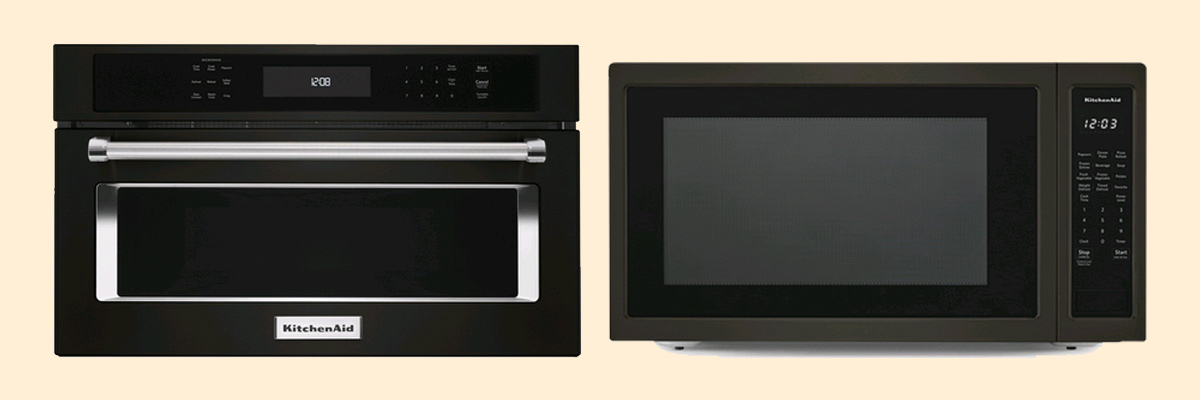Where Are KitchenAid Microwave Ovens Made? A Look at Whirlpool’s Global Manufacturing

KitchenAid, a brand synonymous with quality and style, particularly known for its stand mixers, is a key part of Whirlpool Corporation. Determining where KitchenAid microwave ovens are manufactured involves understanding Whirlpool’s global manufacturing strategy.
Whirlpool Corporation’s Global Footprint
Whirlpool Corporation, headquartered in Benton Harbor, Michigan, is a leading global manufacturer of home appliances. Its manufacturing operations span North America, Latin America, Asia, Europe, the Middle East, and Africa. This global presence allows Whirlpool to utilize specialized manufacturing capabilities, streamline supply chains, and efficiently serve markets worldwide.
Whirlpool maintains a significant manufacturing presence in the United States, with facilities in states like Ohio, Tennessee, Iowa, and Oklahoma. These plants produce a variety of appliances, including refrigerators, washers, dryers, dishwashers, and cooking appliances under various Whirlpool brands, including KitchenAid.
Where KitchenAid Microwave Ovens are Made
While KitchenAid is an American brand owned by an American company, the manufacturing of its microwave ovens, like many appliances from global brands, is often decentralized.
- North America (USA and Mexico): Whirlpool has operations in both the United States and Mexico. While many KitchenAid appliances, including some cooking products, are manufactured in U.S. plants, certain microwave models or parts may be manufactured in Whirlpool’s Mexican facilities. Some KitchenAid refrigerators are reportedly produced in Mexico, indicating a broader North American production base for Whirlpool’s product lines.
- Asia (e.g., China): It’s common for appliance manufacturers like Whirlpool to produce certain products or components in Asian hubs, particularly China. This is due to established supply chains for electronic components, specialized microwave manufacturing facilities, and logistical advantages for global distribution. Online forums have revealed that specific KitchenAid microwave models are produced in China.
KitchenAid microwaves are produced within Whirlpool’s overall management framework, rather than in dedicated KitchenAid-exclusive microwave factories. This allows Whirlpool to optimize production, leverage technological advancements across brands, and efficiently meet global demand.
Determining the Source of Your Individual Unit
U.S. regulations require goods to be labeled with “Made In” and the country of origin. To determine where a specific KitchenAid microwave oven model was manufactured, examine the label on the unit. This label is typically found on the back, inside the door, or on a data plate and will indicate the country of origin.
In conclusion, while KitchenAid has a strong American heritage and many of its products are domestically produced, its microwaves are part of Whirlpool Corporation’s global manufacturing system, with production distributed among facilities in the United States, Mexico, and potentially other countries like China.
FAQs
Are KitchenAid made in China?
Yes, some KitchenAid items are produced in China as part of Whirlpool Corporation’s worldwide supply chain. However, a significant number of KitchenAid products, especially all stand mixers, are proudly assembled in the USA—like in Greenville, Ohio for the mixers and Findlay, Ohio for the dishwashers.
Where are KitchenAid ovens made?
KitchenAid ovens are manufactured by Whirlpool Corporation across their global network of facilities. This includes plants located in the United States, such as Ohio, Tennessee, Iowa, and Arkansas, as well as potentially other countries, depending on the specific model. To find out the exact origin, just check the “Made In” label on the appliance.
Are KitchenAid appliances considered high quality?
Absolutely! KitchenAid appliances are generally regarded as high quality. They’re known for their sturdy construction, dependable performance, durability, and stylish designs. Many users express high satisfaction and report that these appliances last a long time with proper care.
What’s the lifespan of a KitchenAid microwave?
Typically, a microwave oven lasts about 7 to 10 years. However, KitchenAid microwaves, being a trusted brand, can often last 15 years or even up to 20 years if they’re well cared for and not used too frequently.
Is KitchenAid made by Bosch?
Nope, KitchenAid is not made by Bosch. KitchenAid is an American home appliance brand that belongs to Whirlpool Corporation, while Bosch is a separate German brand owned by BSH Hausgeräte GmbH.
What’s the best KitchenAid model?
The “best” model really depends on the type of appliance and what you need. For stand mixers, the KitchenAid Artisan (tilt-head) and Professional (bowl-lift) series are among the most popular and highly rated, offering various capacities and power levels. For other appliances, the best model can vary based on specific features and price.
Is KitchenAid still made in the USA?
Yes, many KitchenAid appliances are still made in the USA. For instance, all KitchenAid stand mixers are assembled in Greenville, Ohio, and their dishwashers are produced in Findlay, Ohio. However, KitchenAid also takes advantage of Whirlpool’s global manufacturing network.
Who manufactures the best ovens?
Determining “the best” oven manufacturer is subjective and depends on priorities like features, price, and specific cooking needs. However, brands frequently cited for high reliability and quality in ovens include Bosch, Miele, GE, Samsung, KitchenAid, and Electrolux. Luxury brands like Thermador also rank highly.
Are KitchenAid ovens made by Whirlpool?
Yes, KitchenAid ovens are made by Whirlpool Corporation. KitchenAid is one of the key brands under the Whirlpool Corporation umbrella, which handles the manufacturing and distribution of KitchenAid appliances.
Is KitchenAid worth it?
Yes, KitchenAid appliances are generally considered worth the investment. They offer a blend of quality, durable construction, reliable performance, and appealing design. While they may come at a higher price point than some competitors, their longevity and functionality often justify the cost for many households.
